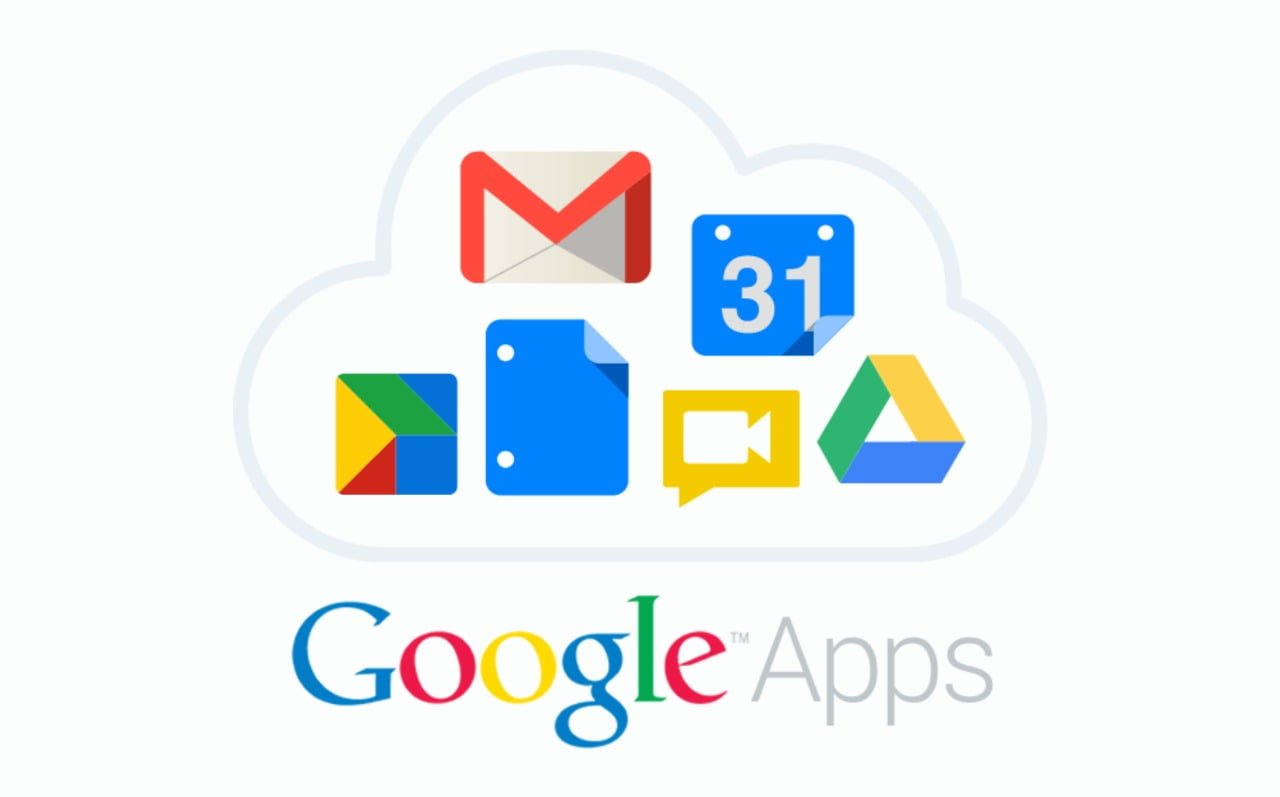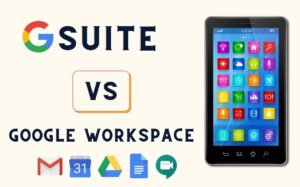Google Workspace Vs G Suite: What’s The Difference?
The transition from Google G Suite to Google Workspace has been a major change for many businesses and individuals. While G Suite was primarily focused on productivity tools such as email, calendar, and document creation, Workspace expands on this with new features such as Meet for video conferencing and Chat for team messaging. Additionally, Workspace offers more customization options for branding and security settings.
The transition process involves migrating data from G Suite to Workspace and adjusting to the new interface. However, the added features and flexibility of Workspace make it a worthwhile upgrade for many users.
Google Workspace, formerly known as G Suite, is a cloud-based productivity suite that provides businesses and individuals with a range of tools for communication, collaboration, and productivity. It includes applications like Gmail, Google Drive, Google Docs, Google Sheets, Google Slides, and many others. With Google Workspace, users can create and edit documents online in real-time with team members from anywhere in the world.
It also offers features like video conferencing through Google Meet and advanced security measures to protect user data. Overall, Google Workspace is designed to help users work together more efficiently and effectively while simplifying their workflows.
Google Workspace offers a range of features and benefits that set it apart from its predecessor, G Suite.
One of the key benefits is improved collaboration, with tools like Google Meet and Chat allowing teams to connect and work together seamlessly. The platform also offers enhanced security measures to protect user data, including advanced phishing protection and data loss prevention. In addition, Google Workspace includes a range of productivity tools like Docs, Sheets, and Slides that are integrated within the platform for easy access and use.
Overall, Google Workspace provides a comprehensive solution for businesses looking to streamline their operations and enhance their productivity.
G Suite and Google Workspace are both productivity suites designed for businesses and organizations. However, while G Suite primarily focused on providing email, document creation, and storage solutions, Google Workspace offers a wider range of tools that integrate with each other more seamlessly. For instance, Google Workspace includes Chat and Meet for video conferencing and collaboration, as well as the ability to create shared workspaces with tasks lists, calendars, and more.
Additionally, Google Workspace offers advanced security features like data loss prevention (DLP) and endpoint management. Overall, Google Workspace is a more comprehensive solution for businesses looking to streamline their workflow.
Choosing between G Suite and Google Workspace for your business can be a daunting task, especially since they offer similar features. The main difference is that Google Workspace offers additional tools such as Meet, Chat, Currents, and Voice for more efficient communication and collaboration. However, G Suite may be sufficient for businesses that only require basic productivity tools like Gmail, Drive, Docs, Sheets, and Slides.
Consider your business needs in terms of communication and collaboration before making a decision. If you need more advanced features like security controls and device management capabilities, then Google Workspace may be the better choice for your business.
Google Workspace
Google Workspace is a cloud-based productivity and collaboration platform that helps businesses and organizations to work more efficiently. It includes a suite of tools such as Gmail, Google Drive, Google Docs, Sheets, Slides, Meet, and Calendar. These tools are designed to enable users to create and share documents, spreadsheets, presentations, and other files in real-time with other team members from anywhere in the world.
Google Workspace works by allowing users to access their files from any device connected to the internet. The platform is built on Google Cloud infrastructure which ensures that data is secure and always available. It also integrates seamlessly with third-party apps for added functionality. With Google Workspace, teams can communicate more effectively through video conferencing using Meet or collaborate on projects simultaneously using Docs or Sheets.
Google Workspace is a powerful suite of productivity tools that can transform the way businesses operate. One of the key benefits of using Google Workspace is that it allows for seamless collaboration between team members, regardless of their location. This means that employees can work together on documents, spreadsheets, and presentations in real-time, making it easier to get work done quickly and efficiently.
Another advantage of using Google Workspace is the integration with other Google services like Gmail and Google Calendar. This allows users to manage their schedules and communications all in one place, streamlining workflows and reducing the need for multiple platforms. Google Workspace also offers robust security features to protect sensitive data, as well as customizable settings that allow businesses to tailor the platform to their specific needs.
Google Workspace is a powerful set of productivity tools that can help streamline your work processes. To get the most out of Google Workspace, there are some tips and tricks you can use. Firstly, customize your workspace by organizing your tabs, setting up keyboard shortcuts, and using the search bar to find files quickly. Secondly, take advantage of collaboration features such as commenting on documents, real-time editing with colleagues and sharing files with anyone.
Thirdly, automate repetitive tasks by using add-ons and integrations to save time. Lastly, utilize the mobile app for on-the-go access to your documents and files. With these tips and tricks in mind, you’ll be able to maximize your efficiency with Google Workspace.
When considering a productivity suite, it’s important to compare the features and benefits of each option. Google Workspace offers a range of tools for communication, collaboration, and productivity that are designed to simplify workflows and increase efficiency. Compared to other productivity suites like Microsoft Office, Google Workspace has a user-friendly interface that makes it easy to navigate and access all its features.
It also offers cloud-based storage that allows users to work from anywhere with an internet connection. Google Workspace’s real-time collaboration tools make it easy for teams to work together on documents and projects in real time. If you’re looking for a cost-effective solution that provides powerful tools for remote work and collaboration, then Google Workspace may be the right choice for you.
G Suite
G Suite is a cloud-based set of productivity and collaboration tools developed by Google. It includes a range of applications such as Gmail, Google Docs, Google Sheets, Google Slides, and Google Drive. G Suite allows users to access these applications from anywhere, on any device with an internet connection. Users can create and edit documents, spreadsheets, presentations and more collaboratively in real-time with colleagues or friends.
Additionally, G Suite offers powerful administrative tools for businesses to manage their employees’ accounts and data security. Users can also integrate third-party applications into G Suite to streamline workflows further. Overall, G Suite is a comprehensive suite of online productivity tools that make it easy for individuals and teams to work together remotely while staying productive.
G Suite is a powerful collection of cloud-based productivity and collaboration tools designed to help businesses streamline their operations and improve communication. Improved Collaboration: G Suite offers a suite of tools that allow teams to work together seamlessly, no matter where they are located.
Increased Productivity: With G Suite, employees can access their work from anywhere, which means they can be more productive even when they’re on the go.
Enhanced Security: G Suite is built with advanced security features to protect your data from unauthorized access, making it a safe choice for businesses that handle sensitive information. Cost-Effective: Since G Suite is cloud-based, there’s no need to invest in expensive hardware or software licenses.
G Suite is an all-in-one productivity suite designed for businesses of all sizes.
The key features of G Suite are collaboration, security, and productivity. Collaboration is made easy with G Suite’s real-time editing capabilities and the ability to work on documents simultaneously with team members. This feature enables teams to work together efficiently and effectively, even when they are in different locations.
Security is another important aspect of G Suite, as Google provides top-level security measures to ensure that data remains safe and secure at all times.
Additionally, G Suite offers a range of productivity tools that enable users to create and share files easily, manage their schedules, and communicate effectively through email and messaging services.
Overall, G Suite offers a comprehensive solution for businesses looking to streamline their operations while enhancing collaboration and security.
G Suite offers a range of pricing options to cater to the varying needs of different types of businesses. The Basic plan, which costs $6 per user per month, provides access to essential tools like Gmail, Drive, Docs, Sheets, and Slides.
The Business plan costs $12 per user per month and includes all the features of the Basic plan along with additional security and administration controls.
The Enterprise plan is priced at $25 per user per month and offers advanced security features, custom branding options, and 24/7 support.
Finally, there is also a G Suite for Education plan that is free for schools and universities. Choosing the right G Suite plan depends on your business needs and budget.
Conclusion
In conclusion, the difference between Google Workspace and G Suite lies primarily in the name and branding. Google Workspace is the newer and more comprehensive productivity and collaboration suite offered by Google, while G Suite referred to the previous version of the same suite. The rebranding to Google Workspace reflects the expanded features and integrations that Google has introduced to enhance productivity and collaboration.
Google Workspace brings together familiar tools such as Gmail, Google Drive, Google Docs, Google Sheets, Google Slides, and more, along with additional features like Google Meet, Google Chat, and improved integration with other Google services. It provides a unified and seamless experience for users to create, communicate, and collaborate in real-time.
The shift from G Suite to Google Workspace signifies Google’s commitment to evolving its productivity suite to meet the changing needs of individuals, teams, and organizations. With a focus on collaboration, flexibility, and efficiency, Google Workspace offers a wide range of features and integrations to streamline workflows and enhance productivity.
While G Suite is still used by some businesses and organizations, Google encourages users to transition to Google Workspace to take advantage of the latest updates and improvements. The transition process is relatively straightforward and allows users to migrate their existing G Suite settings and data to Google Workspace seamlessly.
Overall, the difference between Google Workspace and G Suite is more about the evolution and enhancements made to the suite rather than a distinct separation. Google Workspace represents a more comprehensive and integrated suite of productivity and collaboration tools that empower individuals and teams to work efficiently and effectively in today’s digital world.
Frequently Asked Questions
The pricing for Google Workspace and G Suite may vary depending on the plan and features chosen. It is best to refer to Google’s official pricing information for the most accurate and up-to-date details.
Yes, Google provides a seamless migration process for users to transition from G Suite to Google Workspace. This allows you to transfer your settings, data, and configurations from G Suite to Google Workspace without significant disruptions.
The transition from G Suite to Google Workspace does not require learning entirely new tools. Most of the core applications, such as Gmail, Google Drive, Google Docs, etc., remain the same. However, there may be additional features and integrations within Google Workspace that you can explore and utilize to enhance your productivity and collaboration.
Yes, Google Workspace is designed to cater to the needs of both individuals and businesses. It provides a range of tools and features that enable efficient communication, collaboration, and productivity for individuals, teams, and organizations of all sizes
To get started with Google Workspace, you can visit the official Google Workspace website and explore the different plans available. From there, you can choose the plan that suits your needs and follow the instructions to sign up and set up your Google Workspace account.




